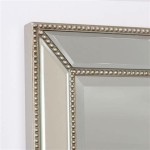Can Windows 10 Do Screen Mirroring?
Windows 10 offers robust screen mirroring capabilities, allowing users to wirelessly display their computer screen on compatible devices like smart TVs, streaming devices, and other Windows 10 PCs. This functionality, often referred to as "casting," provides a convenient way to share presentations, watch movies, play games, and enjoy other content on a larger display.
The primary method for screen mirroring in Windows 10 involves the use of the built-in "Connect" app. This app leverages the Miracast standard, a wireless technology designed specifically for screen sharing. Miracast facilitates a direct connection between the Windows 10 computer and the receiving device, eliminating the need for a separate network or Wi-Fi router. However, both devices must be Miracast-compatible for this functionality to work. Many modern smart TVs and streaming devices have built-in Miracast support.
To initiate screen mirroring using the Connect app, users typically press the Windows key + K. This opens the Action Center's "Connect" quick action. The app will then scan for nearby Miracast-enabled devices. Once the desired device appears in the list, selecting it initiates the connection. The receiving device may display a PIN for verification to ensure secure pairing.
The Connect app offers various display modes. Users can choose to duplicate their screen, extending their desktop across both displays. This mode allows them to utilize the secondary display as an extension of their workspace. Alternatively, users can choose the second screen only mode, effectively turning the external display into the primary monitor and mirroring the content from the Windows 10 PC while turning off the PC display. This latter mode is particularly useful for presentations and watching movies.
While Miracast is the primary method for screen mirroring in Windows 10, it's not the only option. For devices that don't support Miracast, users can explore alternative methods, such as using an HDMI cable for a wired connection. This provides a reliable, high-quality connection, although it lacks the wireless convenience of Miracast. Adapters are also available for devices with other connection types, such as VGA or DVI.
Another option for screen mirroring involves utilizing specific applications designed for streaming content. Applications like Plex, Netflix, and YouTube offer built-in casting capabilities, allowing users to stream content directly from their Windows 10 computer to compatible devices. These applications often handle the connection process automatically, simplifying the setup for the user. This method bypasses screen mirroring entirely, but it still effectively displays content from the computer on a larger screen.
Troubleshooting screen mirroring issues typically involves verifying compatibility, checking drivers, and ensuring both devices are on the same network. If the receiving device doesn't appear in the Connect app, it may not be Miracast-compatible, or the Miracast functionality might be disabled in the device's settings. Updating display drivers on the Windows 10 computer can also resolve compatibility issues. Ensuring both devices are connected to the same network and that network discovery is enabled can also help establish a successful connection.
For wireless displays that struggle to maintain a stable connection, moving the devices closer together can often improve performance. Physical obstructions, such as walls or furniture, can interfere with the wireless signal. Minimizing interference by ensuring a clear line of sight between the devices can help maintain a stable connection and improve the overall mirroring experience.
Windows 10's screen mirroring capabilities enhance the user experience by providing versatile options for sharing and viewing content on larger displays. Whether using the built-in Connect app with Miracast technology, opting for wired connections, or leveraging streaming applications, users can effectively extend their workspace or enjoy multimedia content on a bigger screen. Understanding the various methods and troubleshooting techniques available allows for a seamless and optimized screen mirroring experience.
The versatility of Windows 10 screen mirroring extends to its use in business settings. Presentations can be delivered wirelessly to a larger screen in conference rooms, eliminating the need for cumbersome cables. Employees can share their work on a shared display for collaborative projects, facilitating teamwork and idea sharing. This functionality enhances productivity and simplifies the process of sharing information visually in professional environments.
Furthermore, the wireless nature of Miracast screen mirroring allows for greater flexibility in educational settings. Teachers can easily share their computer screen with students on a projector or smart TV without being tethered to a specific location. This enables more dynamic and engaging presentations, fostering a more interactive learning environment. The ease of use and wireless convenience simplifies the integration of technology into educational practices.

How To Cast Or Screen Mirror Windows 10 A Smart Tv

How To Mirror Windows Screen Another Device In 11 10
How To Mirror Your Windows 10 Pc An Android Projector

How To Setup Screen Mirroring For A Pc

Projecting To This Pc And Screen Mirroring On Windows 10 Minitool

How To Mirror Your Screen On Windows 2 Easy Ways

Screen Share Mirroring App For Windows 10

How To Mirror Display Windows 10
How To Display The Image From Computer On Tv Using Screen Mirroring Feature Sony Au

How To Mirror Your Screen In Windows 10 Laptop Mag








